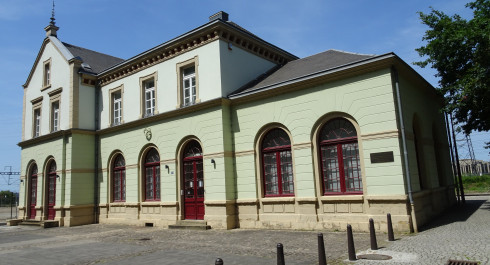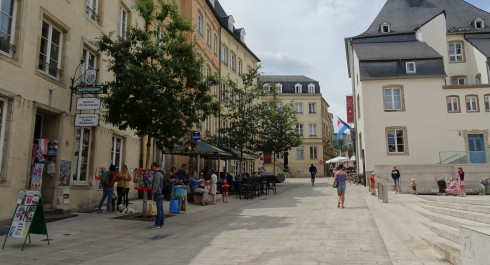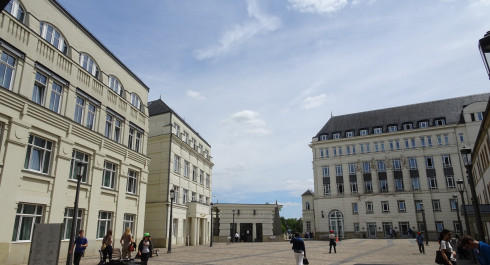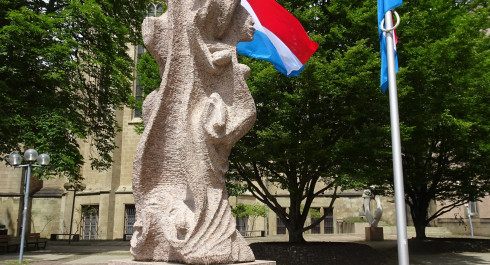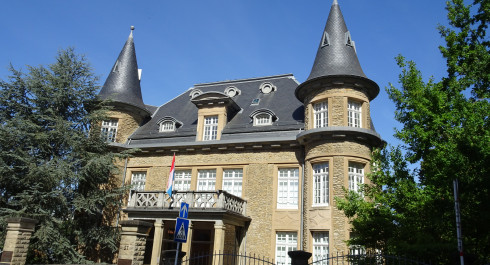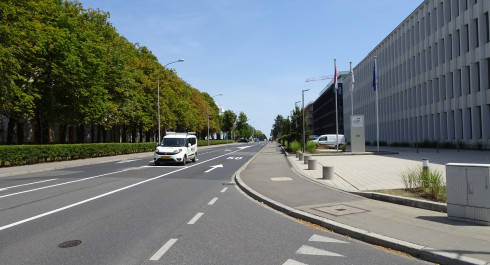
16. The Gallows of Luxembourg City
16. The Gallows of Luxembourg City
There are three locations in the city where gallows used to stand, in other words, the sites where criminals were executed. Imagine you are now present at one of these, namely where the gallows of the earldom or rather Duchy of Luxembourg stood.
The gallows were always set up on a hill near the city so that they were visible from a distance, which was quite effective when the person executed was still dangling and crows tearing at the body. The intention of choosing such a location was meant to be a deterrent: to present the stark consequences and to persuade any future criminals to desist from their nefarious plans.
At the same time, the gallows were a symbol of highest jurisdiction, the legal right of the municipal representatives to impose the death sentence and enforce the execution. In this way, their power and willingness to protect and impose right and order were made evident.
At that time when ‘entertainment’ was nonexistent, executions represented a true public spectacle that attracted everyone, including children. However, such a large number of spectators was problematic. For instance, the fields around the site of execution and those meant to be harvested were trampled on and destroyed. To reduce the level of damage, the gallows were moved to where the least damage could occur, to vacant areas outside the city walls.
Those who worked as executioners were mostly freelance and wandered from city to city to offer their services. They were ostracised by society as they practised an occupation that was not honourable as it was linked to death. They were excluded from the community and for instance had separate benches in the darkest corner in the church and their own designated table in inns. In addition, they had to live at the very edge or outside the city walls, since no one wanted them as neighbours. Executioners also often had trouble finding a wife because nobody wanted to share their dishonourable state.
Laws were very strict before the introduction of the Napoleonic Code and even smaller crimes were brutally punished. Furthermore, the accused had very little chance to defend themselves in court. Execution by hanging was the normal sentence for the common people. The nobility and clergy had the privilege of decapitation.
The location of the gallows was also used for alternative types of execution, for instance to be burned at the stake, to be broken on the wheel or to be quartered. These gruesome punishments were imposed for crimes such as arson, incest or infanticide.
Since the end of the 18th century, the influence of Enlightenment thinking led to fewer death sentences. In the end, the high justice of the city was abolished in the 19th century and the last executioner continued to work as a knacker or animal slaughterer.
Interesting Detail
An example of a description of an execution:
‘After arriving at the foot of the gallows, the executioner is the first to mount the ladder backwards and force the delinquent, encircled by ropes and with the hangman’s noose already fixed around his neck, to slowly follow.
The executioner hastily ties the noose to the gallows’ crossbeam and, with his knee, pushes his charge firmly off the ladder into the void. Then he sets his foot on the rope binding the delinquent’s hands and, holding fast to the crossbeam and with a powerful push, heaves him into the hereafter.’
Significance for Human Rights
The repeal of capital punishment in Luxembourg was a fundamental and important step towards the protection and respect of human dignity. Places such as described witnessed terrible suffering and incredible distress that should warn us that no person, even if found culpable, should be punished with such mercilessness.
Article 3
Everyone has the right to life and to live in freedom and safety.
Article 5
Everyone has the right to be free from torture.

